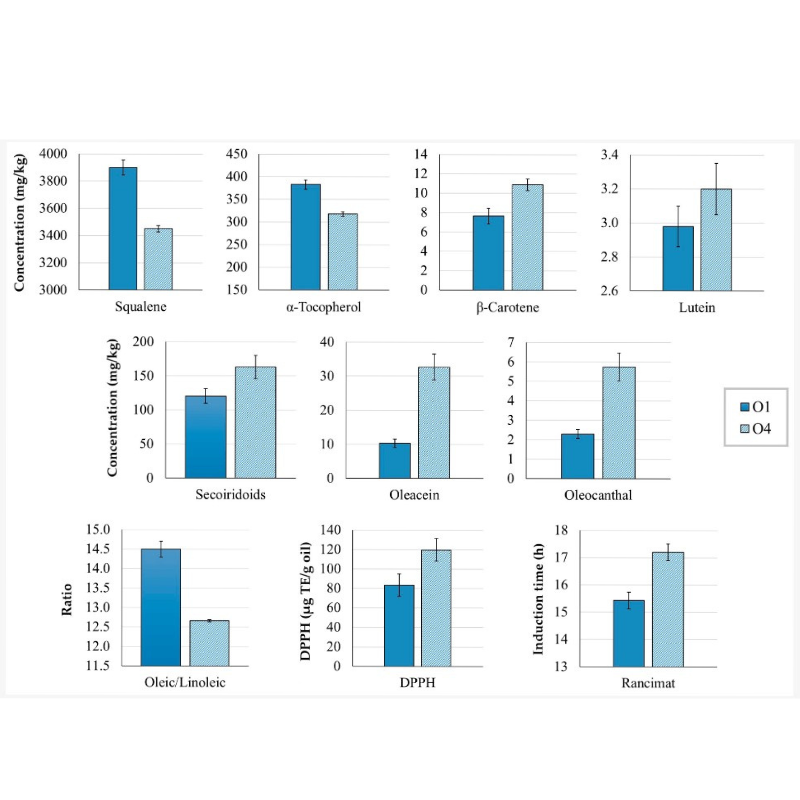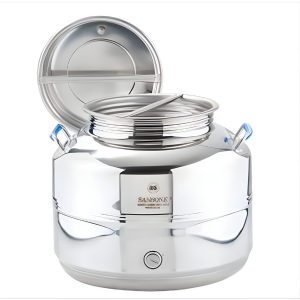15L Sansone Stainless Steel Olive Oil Storage Tank with Spigot
Food-Grade Stainless Steel Europa Welded Model for Liquid Storage
The Sansone 15L Stainless Steel Olive Oil Storage Tank is a medium-capacity welded container designed for hygienic storage of olive oil, wine, vinegar, honey, and other liquid foods. Made from AISI 304 stainless steel, it provides food safety, corrosion resistance, and long service life. Its welded drum construction with smooth interior surfaces prevents residue buildup, while the secure screw-top lid and 130mm wide opening ensure convenient filling, cleaning, and sealing.
Lightweight at just 2.2 kg and equipped with reinforced side handles, this tank balances capacity with portability. A ½ inch fitting allows reliable dispensing, making it practical for both professional and domestic environments.
Key Features
- 15L liquid storage capacity
- Constructed from food-grade AISI 304 stainless steel
- Europa welded model with smooth, hygienic finish
- Secure screw-top lid with 130 mm wide opening
- ½ inch fitting (tap included) for controlled dispensing
- Reinforced side handles for safe carrying
- Lightweight and portable design – 2.2 kg
- Suitable for olive oil, wine, vinegar, honey, water, and juices
Technical Specifications
| Specification |
Value |
| Capacity |
15 L |
| Material |
AISI 304 stainless steel (18/10) |
| Model |
Sansone Europa welded drum |
| Opening |
130 mm screw-top lid |
| Tap |
½ inch stainless steel spigot |
| Weight |
2.2 kg |
| Handles |
Reinforced stainless steel side handles |
Why Choose This Tank
This Sansone 15L stainless steel tank is an excellent balance between capacity and portability. Its welded design ensures durability and hygiene, while the stainless steel body protects liquids from oxidation and contamination. The spigot allows easy, accurate dispensing, making it practical for kitchens, tasting rooms, boutique producers, and home users.
Recommended Cleaning Procedure
- Water & Dish Soap: Simple cleaning for everyday use.
- Water & Vinegar: Removes residues and odours effectively.
- Water & Caustic Soda: For deep cleaning. Keep the upper tap open during cleaning to avoid suction damage.
Frequently Asked Question
Q: Why are welded stainless steel tanks with spigots ideal for storing and dispensing olive oil?
Olive oil and other liquid foods are highly sensitive to light, oxygen, and contamination. Plastic or glass containers may not provide adequate protection or ease of use when handling medium volumes. Welded stainless steel tanks offer a sealed, non-reactive environment that preserves freshness and prevents flavour loss.
The addition of a spigot makes dispensing cleaner and more accurate, avoiding spills and oxidation that can occur when pouring directly from open containers. The welded Europa design also eliminates seams that can trap residue, making cleaning easier and more hygienic. This combination of safe storage and controlled dispensing is why welded stainless steel tanks with taps are trusted by both professionals and home users.
Key advantages include:
- Preserves flavour and prevents oxidation
- Food-grade stainless steel for hygiene and safety
- Welded construction reduces bacterial risk
- Spigot allows controlled, mess-free dispensing
- Compact and portable for kitchens and producers
The result is reliable storage and dispensing that maintains the quality and integrity of olive oil and other liquid foods.
Delivery included within Australia.
More Information
" Thanks so much for organising our last order. The tanks were perfect…….in-fact so great we would like to order 10 more!" GE, Perth WA.
"Thankyou for your assistance on this order, the Fusti's arrived yesterday afternoon and we are thrilled with them" T.B. QLD











